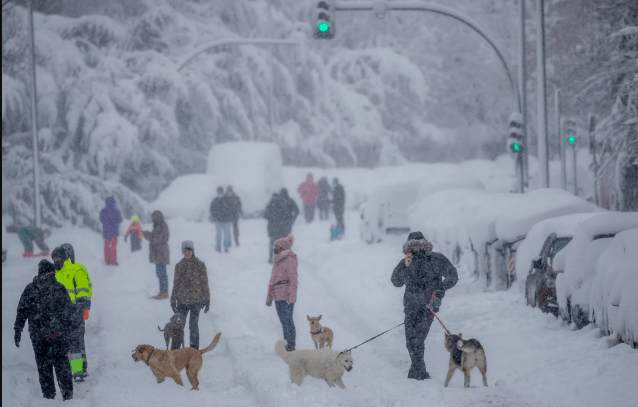High above the North Pole, dramatic changes are occurring in the stratosphere, a layer of the atmosphere that often goes unnoticed.
An unforeseen stratospheric warming is presently weakening the polar Vortex, the swirling band of Arctic air that typically stays locked in place.
This shift could allow frigid air to move southwards, potentially bringing a cold and snowy launch to December across North America, Europe, and the corridor of Asia.
The Polar Vortex and Sudden Warming
The polar Vortex is basically a constraint system for Arctic air, held in place by strong winds in the stratosphere.
When these winds weaken due to unforeseen stratospheric warming, the Vortex can wobble or indeed reverse, transferring icy conditions into mid-latitude regions.
I think the UK Met office does a good job of describing the polar vortex. Even tho we are in North America, the principles are virtually the same. The jet stream and it’s ever-changing pattern affect all across the Northern hemisphere. #onwx #onstorm (Credit: UK Met office) pic.twitter.com/PtBNVeDLTo
— Ron (@mrwx4caster) November 22, 2025
Amy H. Butler, a meteorologist at the National Oceanic and Atmospheric Administration, explains, “This paradoxical warming trend in the upper atmosphere results in the weakening of polar vortex winds, leading to the potential for them to actually reverse direction.”
Events like this in November are rare, making scientists particularly vigilant this year.
Arctic Outbreaks and Winter Patterns
When the polar Vortex weakens, the goods frequently include a crest of warm high pressure over Alaska, which pushes the spurt sluice southward.
This can bring colder air and increased rush into central and eastern areas, resulting in snowier conditions.
Meteorologists warn that “more active storm tracks and increased cold air outbreaks are likely to occur,” according to López Lang.
Impact Across the Northern Hemisphere
The effects of a disrupted polar vortex may be felt during the Thanksgiving week in the United States, contrasting sharply with current record heat in some regions.
Judah Cohen, a research scientist at MIT, notes that while predicting a major winter storm is difficult, “colder than normal conditions may develop in mid-latitude regions over the next month.”
It may take several weeks for the polar Vortex to stabilise, so the full impact will unfold gradually.
Challenges in Forecasting and Monitoring
Monitoring these events depends heavily on satellite data. López Lang emphasises, “The only way that we really observe these phenomena is via satellite data.”
With geriatric satellites and backing constraints affecting data collection, scientists face additional challenges in tracking unforeseen stratospheric warming and predicting its impacts.
Understanding polar Vortex dislocations is pivotal for perfecting rainfall predictions and anticipating downtime conditions.
Residents across the Northern Hemisphere may need to prepare for colder temperatures and early snowfall, as the decaying Vortex sets the stage for a potentially wintry December.






